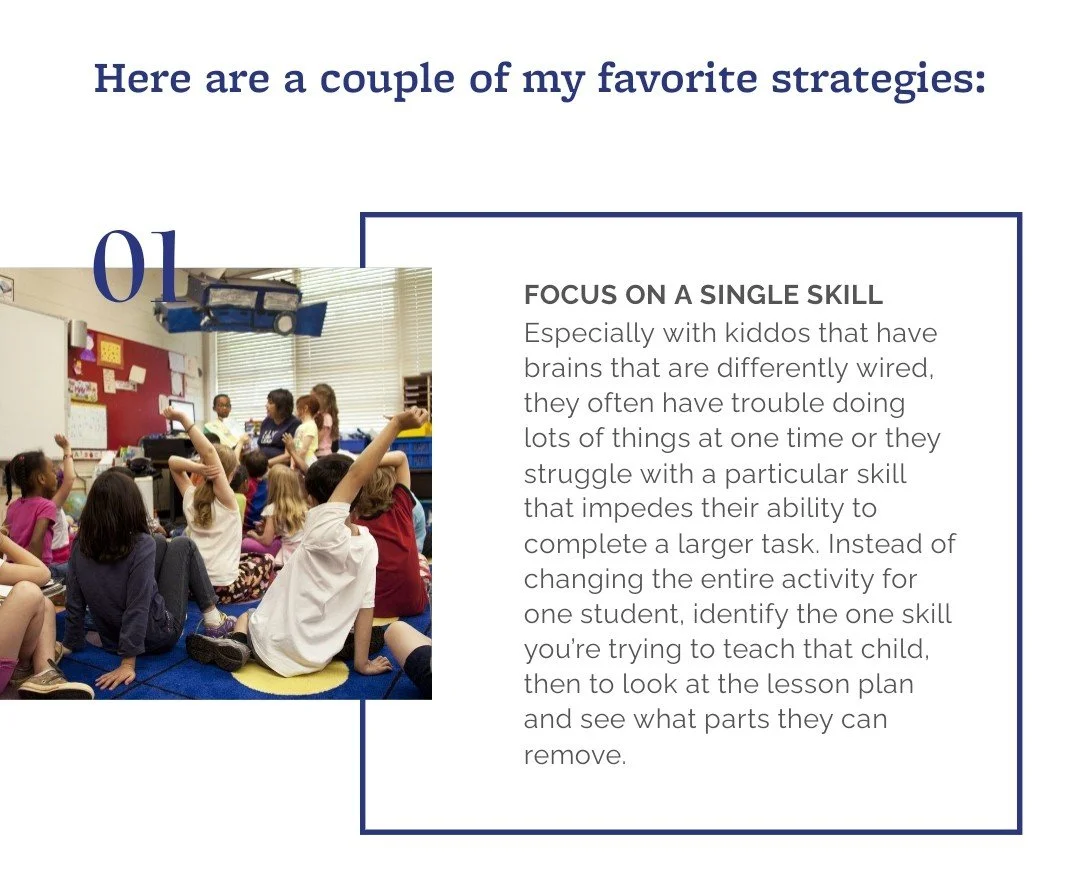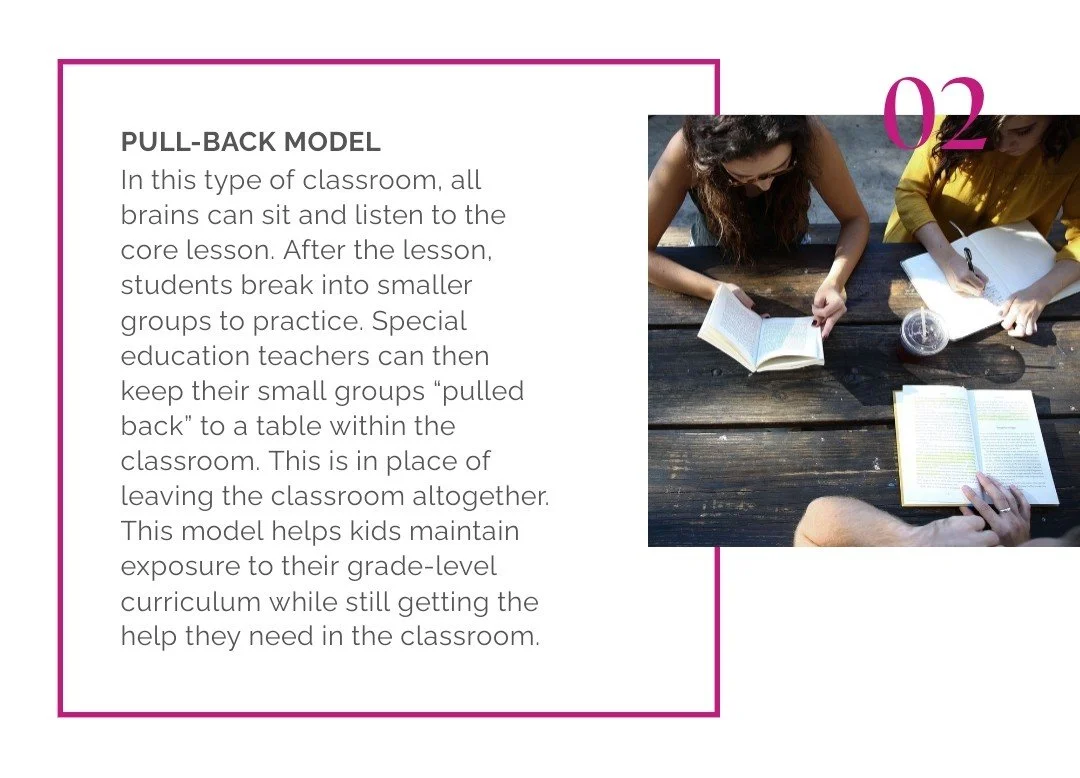Inclusive Programming and Differentiated Instruction
Within any classrooms of 30 students, you could have 30 different learning styles and different learning needs. You throw in a pandemic in the middle of it all, and you have a doozy! Now we have general education students who are falling behind in math and reading (and let's not even talk about those social and emotional skills!). Because of all of this, it's even more important that educators offer a variety of ways to learn skills in an inclusive manner, where all students can work side-by-side in the classroom.
For example:
If you’re trying to teach a child how to generate ideas, think about removing the burden of writing down the words. Instead, use a voice-to-text app or device to record their thoughts, have another student (who likes to write) scribe the ideas, scribe the ideas for the student if you’re able to meet 1:1, or simply give students a chance to discuss ideas in small groups. You’ll be surprised at the kinds of ideas being generated when the kiddos can focus on thinking and talking instead of actually writing, spelling, and punctuating. Once they’re able to generate ideas and organize thoughts, then you can shift to adding a handwriting or typing component.
Try these out and let me know how it worked! You have other strategy ideas? Share with me!


